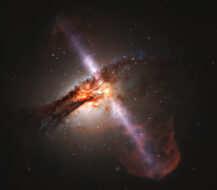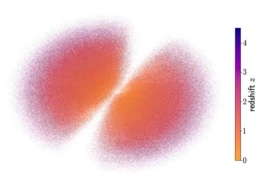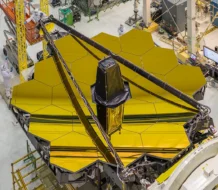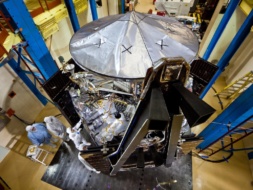In September 2020, a team of astronomers made waves across the scientific community when they reported they’d identified phosphine, a potential marker of life, in the atmosphere of Venus.
Now, NASA says those findings were too good to be true.
What’s the big deal about Venus? Venus remains somewhat of a mystery to us. It’s surrounded by dense, reflective, sulfuric clouds, which make observations from afar difficult. And whenever anyone tried to send a lander to the planet to gather more information, the incredibly high surface temperatures and pressures destroyed it within minutes.
For decades now, space agencies the world around have forgone attempts to study Venus, instead prioritizing Mars missions. There’s only one active mission, JAXA’s Akatsuki orbiter, still studying the planet from nearby. So when observations from the ALMA telescope in Chile showed evidence of phosphine in the atmosphere, it was big news.
On Earth, phosphine is only created through biological processes; for example, it’s produced by some species of anaerobic bacteria and by decaying organic matter. Phosphine can be found on Jupiter and Saturn, as well, where scientists believe it’s forged in the intense environments in the planets’ depths, then brought to the surface by currents of gas. But on Venus, there is no known geological explanation for the existence of phosphine—so naturally, the scientific community jumped at the possibility of life.
Enter NASA
Such huge potential discoveries require a lot of fact-checking. To follow up on the 2020 study, NASA sent its now-retired SOFIA (Stratospheric Observatory for Infrared Astronomy) aircraft out on a mission to observe the planet. SOFIA’s vantage point in the stratosphere meant that it could observe Venus more clearly than a ground-based telescope like ALMA.
Sadly for believers in life on Venus, the SOFIA observations refuted that there is any phosphine in the planet’s atmosphere. According to the research team, if there is any phosphine there at all, it’s no more than 0.8 parts per billion, far lower than the original estimate of 20 parts per billion.
There’s still hope: The original finding had at least one valuable outcome: rekindling interest in studying Venus. NASA, ESA, Roscosmos, and ISRO have each announced science missions to Earth’s evil twin within the coming decade, and Rocket Lab made a splashy announcement earlier this year that it is planning on launching its own Venus atmospheric probe as early as next year.
Plus, the original authors of the phosphine findings stand by their study, and say there are possibilities that NASA may have overlooked. Pretty soon, we may know for sure.
This story originally appeared in Parallax, our weekly science newsletter. Subscribe to Parallax here.




